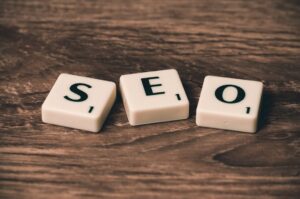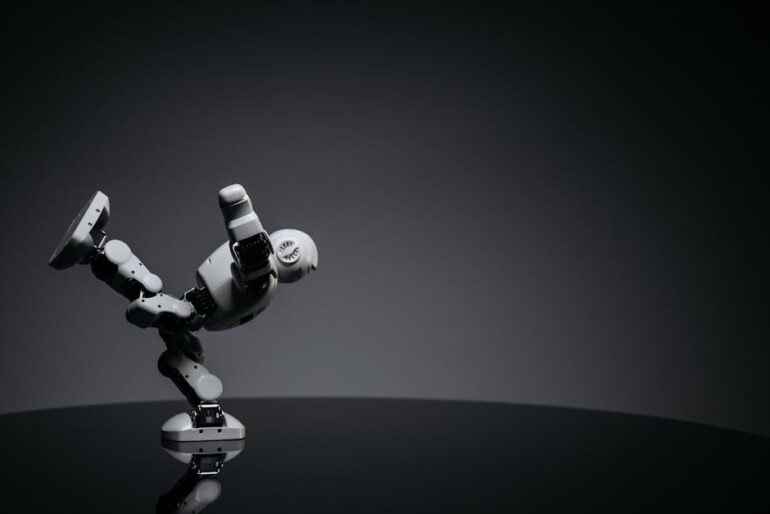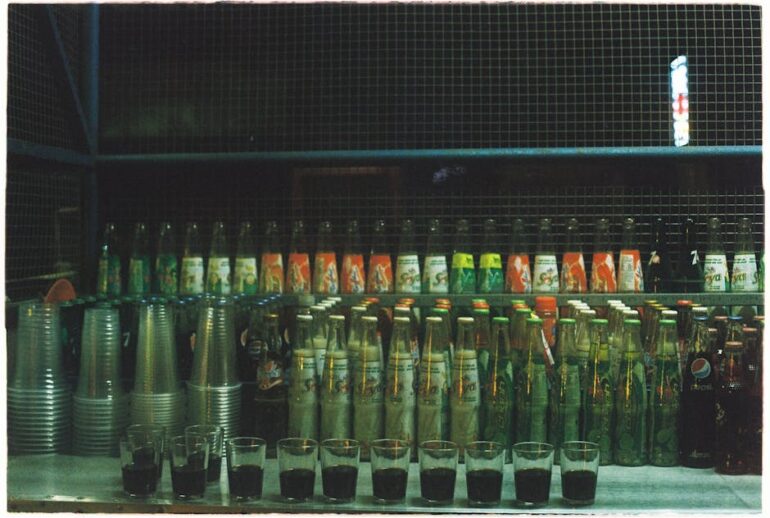Remember back in like, 2020 or so, when online ads often looked kind of… stiff? Like a square photo, some text, maybe a headline, and if it didn’t fit right on a website, tough luck. Well, things are totally different now, especially with how ads learn and change all on their own. We’re deep into 2025, and if you’re trying to get eyeballs on your stuff online, you’ve probably heard about Responsive Display Ads, or RDAs. But it’s not just about them being “responsive” anymore. The real kicker is how much automation runs behind the scenes, making these things smart. Seriously, it’s wild how much computers handle now.
It’s not just some fancy buzzword anymore, this “automation” thing. For RDAs, it’s basically the whole engine. Picture this: you give the ad platform a bunch of pieces – like maybe three or four different headlines you think are good, a couple of descriptions, a handful of pictures, maybe a video or two, and a logo. That’s your kit. What happens next, and what’s really interesting, is that the ad system doesn’t just pick one combo and stick with it. Instead, it starts mixing and matching all those pieces you tossed in. It tries out a picture with one headline, then another picture with a different headline, sometimes it throws in a video. And it does this constantly. It’s almost like a super-fast chef trying out different ingredient combinations to see what tastes best to the most people.
What I find pretty cool is how this whole process isn’t just random guessing. There’s a lot of brainpower, or rather, computer power, figuring out what works. The automation here isn’t just about showing different versions. It watches what people do. Like, did they click on the ad with the blue background? Or the one that talked about “saving money” instead of “new styles”? It’s constantly gathering data, every single second. And it’s not just simple clicks either. It’s looking at conversion rates, how long someone stayed on the page after clicking, even if they bounced right off. All this stuff gets fed back into the system, almost like the ads are having little conversations with themselves saying, “Oh, that headline worked better on this kind of website for that type of person.”
Why this “smart mixing” is a big deal
Think about it for a second. If you had to manually create every single version of an ad for every possible size and placement across the internet, you’d spend all day, every day, just doing that. You’d probably go bonkers. And you’d never even know which specific combo of headline, image, and description was doing the best work in a particular situation. Automation in RDAs handles all that grunt work. It takes your various assets – those headlines, images, descriptions – and then it intelligently puts them together in ways that fit the available ad space. Whether it’s a giant banner on a news site or a tiny little square in an app, the ad reshapes itself. That’s the “responsive” part.
And that’s where the automation really shines. It’s not just making the ad fit; it’s picking the best-performing assets to fit. So, if your headline “Get 20% Off Now” is doing gangbusters on mobile but your other headline “Super Savings Inside” is kinda meh, the system figures that out. It’ll start favoring the “20% Off” one more often for mobile users, or maybe even show it to certain demographics that respond well to discounts.
It’s like having an army of tiny digital assistants working tirelessly to test, adapt, and optimize your ads. They don’t take coffee breaks, they don’t get tired, and they certainly don’t complain about repetitive tasks. They just run through millions of possibilities, learning from each interaction. I believe this continuous learning loop is what sets modern RDAs apart. It’s not just set-it-and-forget-it; it’s set-it-and-watch-it-learn-and-grow.
The Brains Behind the Blends: How AI Powers RDA Automation
Okay, so we’ve talked about what it does, but how does it do it? At the core of this whole thing is something called machine learning, which is basically a type of artificial intelligence. It’s not like the robots from movies, though. It’s more like a super sophisticated pattern-recognition engine.
Smart Bidding and Budget Control
One of the places you really see this automation at work is with bidding strategies. Forget manually fiddling with bids every hour. That’s so 2022. Now, you tell the system what your goal is – maybe you want to get as many clicks as possible within your budget, or you want to get the most sales, or maybe you just want your brand seen by a ton of people. You set that goal, give it a budget, and the automation takes over.
It literally predicts, in real-time, what the chances are that someone will click your ad, or even better, buy something after seeing it. It looks at a zillion things: the time of day, the person’s location, what kind of device they’re using, what they’ve searched for recently, even what website they’re on right now. If it thinks someone is super likely to buy your product, it might bid a bit higher to make sure your ad shows up for them. If it thinks someone’s just casually browsing with no real intent, it might bid lower or not show your ad at all. It’s really about getting the most bang for your buck, automatically adjusting how much you pay for each ad impression or click based on its potential value. It’s like having a super savvy stock trader for your ad budget.
Audience Targeting That Reads Minds (Almost)
This is another area where the automation is just… wild. You can give the system some basic ideas of who you want to reach, like “people interested in hiking” or “parents with young kids.” But the automation doesn’t stop there. It starts to build out profiles of these people based on their online behavior. It sees patterns you and I would never notice. It might find that people who search for “best hiking boots” also tend to read articles about sustainable travel. And boom, it starts showing your hiking gear ads to people who fit that extended pattern, even if you never explicitly told it to target “sustainable travelers.”
It also figures out the best time to show an ad to a specific person. Maybe someone is more receptive to buying clothes in the evening after work, but they only click on tech ads in the morning during their commute. The automated system tries to figure that stuff out for each person and show the right ad at the right moment. It’s not just “target hiking enthusiasts” anymore; it’s “target hiking enthusiasts who are currently browsing a blog about national parks on their tablet at 8 PM on a Tuesday because they tend to buy outdoor gear at that time.” That’s a bit of an oversimplification, but it gives you the idea. This real-time optimization is what makes it so different from how we used to think about targeting.
Creative Optimization: The Ad Designer in the Machine
And then there’s the creative part, which is pretty amazing too. You give it your headlines, descriptions, images. The system doesn’t just randomly combine them. Oh no. It’s constantly testing which combinations work best together. For example, it might figure out that for people in warmer climates, an image of someone wearing shorts and a t-shirt outdoors works better with a headline about “summer adventures.” But for people in colder places, the same headline might do better with a picture of a cozy campfire.
It’s constantly analyzing performance metrics for each asset. It can figure out that one particular image is consistently getting more clicks than others, or that a certain description leads to more conversions. It then automatically prioritizes those high-performing assets. It’s basically running A/B tests on steroids, all day, every day, without you having to lift a finger after you’ve provided the initial assets. This means your ads are always showing their best possible face to the right people. What’s interesting is, sometimes the combinations it finds effective are ones you might never have thought of yourself.
What’s the takeaway here? For advertisers, this means less time spent on tedious manual tasks and more time thinking about strategy – like what core messages to put out there, or what new images to test. For the people seeing the ads, it hopefully means more relevant and less annoying advertising. That’s the dream, right?
Future Vibes and Current Realities with RDA Automation
So, looking ahead, what does this all mean? My personal view is that these automated systems are only going to get smarter. We’re going to see even more granular targeting and even more intelligent creative variations. Maybe in a year or two, you’ll just feed it your website and a few keywords, and it’ll whip up an entire suite of ads, including video snippets, all automatically.
Right now, though, it’s about finding that sweet spot where you provide enough good assets for the automation to work with, but you don’t micromanage it too much. You gotta trust the system a bit, even when it does things that seem counterintuitive at first. Sometimes, the numbers it spits out about what’s working just make you scratch your head. But often enough, they’re right.
It’s not perfect, don’t get me wrong. Sometimes, the automatic headlines it generates based on your descriptions can be a bit awkward. And sometimes, it might pick an image that doesn’t feel quite right with the text. So, you still need human oversight to make sure the brand message is clear and nothing looks totally bonkers. But those moments are getting rarer. And frankly, the overall efficiency boost is hard to argue with. It’s pushing us into a realm where advertising isn’t just about shouting your message, but about having a dynamic, personalized conversation with potential customers, all powered by clever machines.
FAQs about how Responsive Display Ads use automation
Q1: So, like, does automation mean I don’t have to do anything anymore for my ads?
Not really. It means you don’t have to do the super repetitive, manual stuff. You still gotta give the system good headlines, descriptions, and images to work with. Think of it as providing the ingredients; the automation is the chef who cooks up all the meals. If your ingredients are bad, the meals will be too, no matter how good the chef is.
Q2: How does the automation actually figure out which ad combinations work best?
Basically, it runs tons of mini-experiments all the time. It shows different combinations of your headlines, images, and descriptions to real people. Then, it watches what happens – who clicks, who buys, who ignores it. It collects all that data and learns from it, figuring out patterns of what works for different audiences, websites, and devices. It’s like a super-fast scientific process for your ads.
Q3: Can the automation create brand new images or text for me?
Not exactly from scratch, not yet anyway, in 2025. You provide the raw materials. But it can pick the best parts of what you give it and put them together in ways that are totally new combinations. Some platforms are starting to dabble in AI-generated suggestions for ad copy or slight image tweaks, but the core creative heavy lifting usually still starts with your initial assets.
Q4: Is it always better to let the automation do everything, or should I still have some control?
My feeling is you should definitely have some control. The automation is smart, but it’s not a human with a deep understanding of your brand’s voice or specific campaign nuances. You set the goals, provide high-quality assets, and monitor performance. If something looks off, you can always jump in and tweak the inputs or even pause certain combinations. It’s a partnership, really, between you and the smart system.
Q5: What’s the biggest benefit of automation in RDAs for someone just starting out with ads?
For someone new, the huge benefit is that you don’t need to be an advertising genius to get good results. You can put in a few decent pieces, and the automation will automatically optimize your ads to fit various spaces and perform well. It takes away a lot of the guesswork and makes it easier to get your ads seen by the right people, without needing a massive ad budget or a huge team. It really levels the playing field a bit.

















